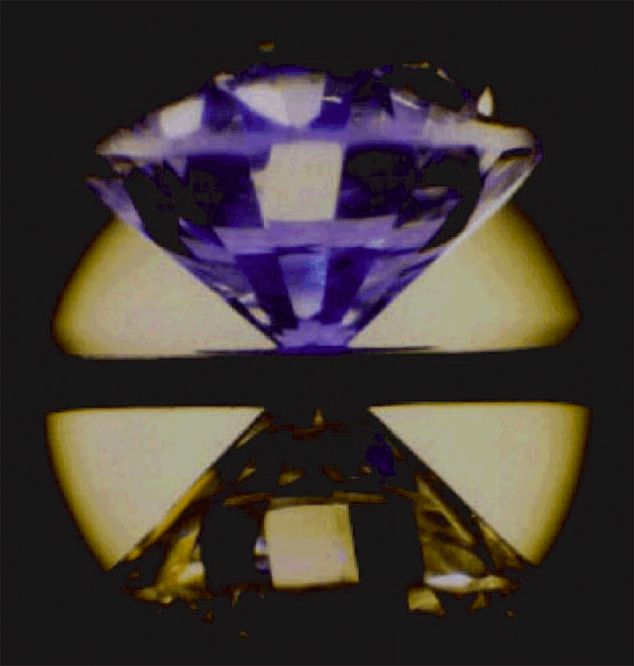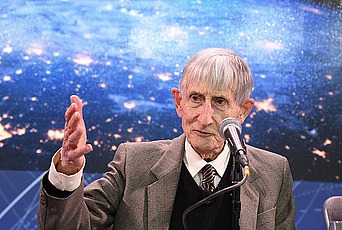
Strange, Unpredictable Chemistry at High Pressure
Ars Technica's John Timmer describes a talk given by chemist Russel Hemley as part of Dreams of Earth and Sky, a program held at the Institute on the occassion of Professor Emeritus Freeman Dyson's ninetieth birthday, writing "Hemley focuses on extreme conditions, saying that 'we have a completely different atomic table at extreme pressures.' The elements we're familiar with under normal conditions tend to see their behaviors shift down and to the right as pressures increase. This leads to unexpected results. At 20 GigaPascals (each GigaPascal is about 10,000 atmospheres of pressure), O2 breaks down and forms an eight-atom box—which happens to be a brilliant scarlet in color. Add another 10GPa, and it turns into a superconductor, as do sulfur, boron, and lithium.
Lithium and other metals also undergo multiple phase transitions, gradually opening up into a complex lattice with open spaces internally. Rather than circulating freely, the electrons often get stuck in these spaces. Hemley referred to this as 'electret bonding' and described it as being entirely new."
Read more at Ars Technica.
